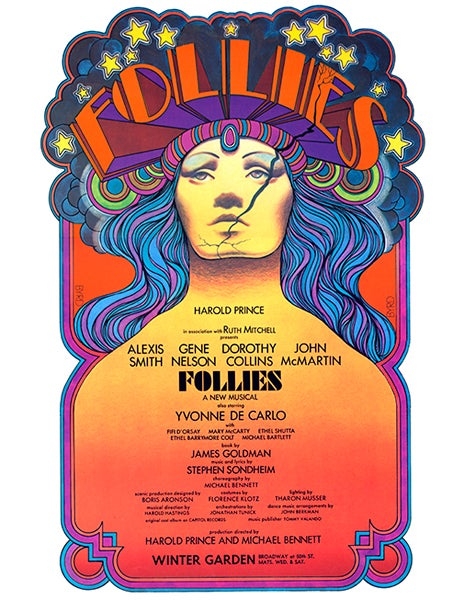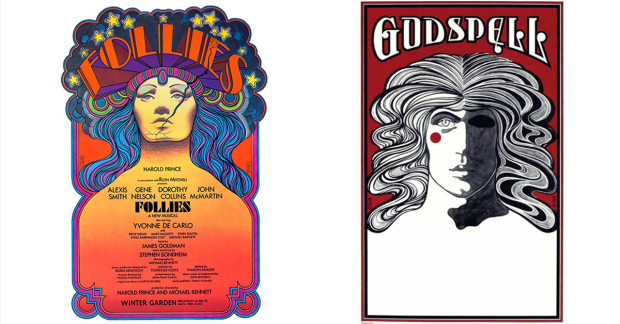Interview: How Gloria Swanson and Marlene Dietrich, Not Dolly Parton, Inspired the Follies Poster
Designer David Edward Byrd discusses the evolution of his now-iconic design.

In the late 1960s, artist David Edward Byrd was designing rock posters for shows at the newly opened music venue the Fillmore East. After creating concert posters for the likes of Jimi Hendrix, Jefferson Airplane, and the Rolling Stones (not to mention, the Who's Tommy and Woodstock), he came upon an assignment that would introduce him to the world of Broadway. Byrd submitted designs for the poster for the new Stephen Sondheim-James Goldman musical Follies, and while it took a couple of passes, the art he created has gone down in theatrical history. With the show marking its 50th anniversary on April 4 (which happens to be Byrd's 80th birthday), Byrd tells us how it came to be.

How did you get involved with Follies?
I was just getting started trying to do posters, and Roger Puckett, who ran Triton International Theater Posters, called me and said, "Listen, Hal Prince is doing this show called Follies," and he thought I should do a sketch. Then, he called me back and said, "Well, they have 14 artists already paid and can't take another one," so Roger said, "What if he does it for free?" and they said, "Oh, we love free."
Roger sent me that photo that the musical was based on — Gloria Swanson in the rubble of the Roxy — and I did a little sketch of a Follies girl standing at the top of the stairs in the rubble. She had on a cloche, a headdress, and a peacock gown. I sent it via Roger, and they told me that my inspiration should be Dolly Parton, who was very big at the time. They said that she should have big blond hair coming over her shoulders and she should be in a shocking red dress, and I thought, "Oh, fuck, I'm screwed." It was such a bad idea. I started on the redo, which looked like shit. I hated it. I was being very dramatic in those days.

(images provided by David Edward Byrd)
How did that evolve into the poster we all know now?
I had this book called Four Fabulous Faces. The four faces were Marlene Dietrich, Gloria Swanson, Joan Crawford, and Greta Garbo. It was all photographs of them in various stages of whatever, from young to old age. I came across this one photo of Marlene Dietrich from Shanghai Express and it was the poster. So, I just started drawing it. I did it really fast in a few hours, because I was really jazzed. Hal Prince deigned to call the artist and said, "This is the greatest poster I've ever seen." They didn't ever mention that Dolly Parton shit again. That's the poster that you now know, exactly.

(images provided by David Edward Byrd)
Tell me about some of the nitty-gritty details, specifically, the crack through the face, and the vibrant color scheme.
The whole show is about the end of the era. How do you put that across? The crack. It's broken, and next, it'll be peeling. Everybody in the world connected with the show said they came up with the crack, but they didn't.
I wanted the poster to say "POW!" I wanted it to grab you, so I used colors that had the highest chroma. That's yellow, and orange, and light violet. Those are the colors that grab you. I was flying by the seat of my pants. I really had no idea what I was doing, so I just did it. I didn't even have an airbrush. I had to use spray magic marker to make the gradations. I was just faking it.
After Follies, I got a call from Edgar Lansbury — Angela's brother — and he told me that he was producing a musical about Jesus called Godspell. I went to his office, which was in the Winter Garden Theatre building, and he said, "Stick you head out the window and look to the right," and there was the Follies poster. He wanted Godspell to look like Follies.
It does, sort of.
Stephen Schwartz didn't like it. He said it was too heavy. But it was a transliteration of the Follies poster, in a way. It's "Son of Follies."

(images provided by David Edward Byrd)







